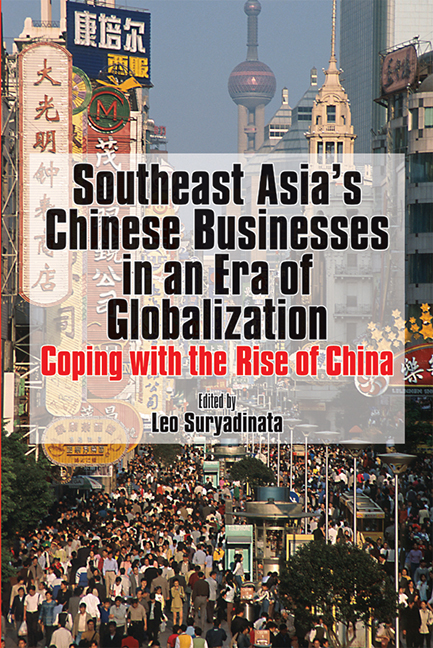11 - Ethnic Chinese Business in an Era of Globalization: The Singapore Case
from Singapore and Thailand
Published online by Cambridge University Press: 21 October 2015
Summary
INTRODUCTION
Globalization is not a new phenomenon. As far back as the Tang Dynasty in the seventh century, trade routes of the Silk Road had brought together Eastern and Western civilizations through trade. Since the visit of Marco Polo to China in the thirteenth century, global economic integration had accelerated, amidst interruptions during World Wars I and II in the early part of the twentieth century. However, globalization continues to be a rising trend, with occasional outbursts of protectionism and anti- globalization rhetoric. From the historical perspective, World Bank (2002) identifies three major waves of globalization. The first wave of globalization occurred in the period 1870–1914, resulting from decreases in tariff barriers and transportation costs with the advent of steamships and railways. The progress of globalization ended abruptly with the outbreak of World War I, starting from 1914. International trade was severely disrupted. After the war in 1918, the Great Depression of the 1930s gave rise to protectionism among major trading countries. Again, globalization was in disarray when World War II broke out in 1942. After the war in 1945, the second wave of globalization which took place between 1945 and 1980 ignited a hope for acceleration in economic integration at a global scale. With falling transportation costs and a reduction in trade barriers among developed countries, there was a sharp increase in international trade in manufactured goods, apart from the usual primary commodity trade. Of significance was the spread of agglomeration economies arising from clustering of related industries in specific locations, thus facilitating vertical and horizontal integration within an industry. The other important occurrence during this period was the emergence of multinational corporations (MNCs) in facilitating international trade and capital flows. Globalization process went into a new peak after 1980 when information and communication technologies breakthroughs cut communication costs dramatically. Together with digitalization, information-based activities are “weightless” so that inputs and outputs can be traveled vast distances at virtually not cost.
- Type
- Chapter
- Information
- Southeast Asia's Chinese Businesses in an Era of GlobalizationCoping with the Rise of China, pp. 289 - 320Publisher: ISEAS–Yusof Ishak InstitutePrint publication year: 2006



